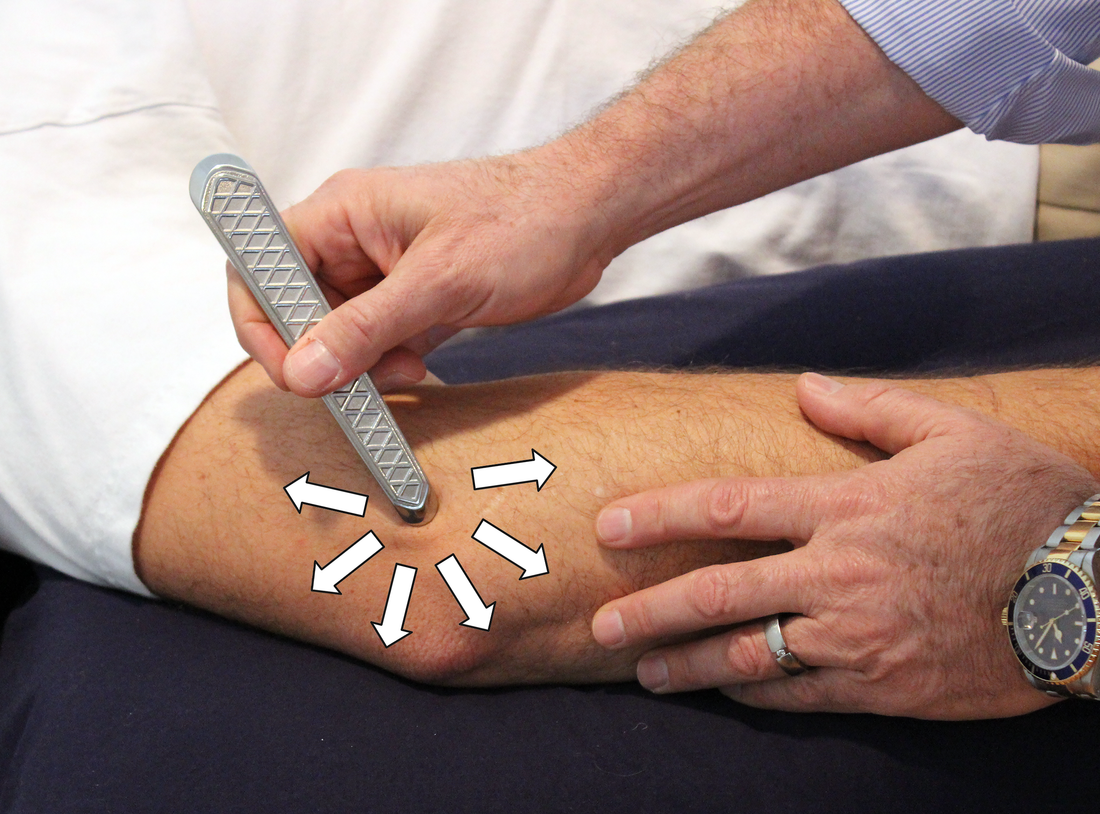What is Lateral Epicondylitis?
Lateral Epicondylitis, or Tennis Elbow, occurs on the outside of the elbow and sometimes in the forearm and wrist. Pain is the primary symptom.
Causes of Tennis Elbow
It is normally caused either by trauma to the elbow or, more often, by repeated stress on the elbow tendons in sports or by use of certain tools. As the name implies, Lateral Epicondylitis is often caused by the force of the tennis racket hitting balls in the backhand position. When making a backhand stroke in tennis, the tendons that roll over the end of the elbow can become damaged. Forearm muscles which attach to the outside of the elbow may become sore from excessive strain. It may be recognized as swelling of the tendons that bend the wrist backward away from the palm of the hand. Seeking tennis elbow pain relief is crucial in these cases. However, many people who suffer from Lateral Epicondylitis do not play tennis. The problem can be caused by any repetitive movement.
Symptoms may start with pain, burning, or an ache along the outside of the forearm and elbow. If the activity continues, pain may spread to the wrist, even at rest. It may cause pain to lift and grip small objects, such as a coffee cup. A weak grip is another symptom. Finding effective tennis elbow treatment and achieving tennis elbow pain relief is essential for those experiencing these symptoms.
Research Findings on IASTM Therapy
In a 2015 study at IU Health Ball Memorial Hospital and The University of Texas Medical Branch found IASTM therapy to be “an effective treatment option for patients with Lateral Epicondylitis (LE) tendinopathy, as an initial treatment, and after an eccentric exercise program has failed.” Subjects assigned to the treatment group were seen in a physical therapy clinic twice weekly for four weeks. At least two days were given between sessions to allow for adequate response to the theorized regenerative stimulation from the treatment. The treatment was performed by applying instruments topically in a systematic pattern throughout the involved extremity deliver particular pressures and shear forces to the underlying tissue.
In the study, researchers found that both comparative treatments in this study aim to improve the pathologic condition of the tendon, have evidence indicating positive physiologic effect…. “This study compares [IASTM] therapy to an evidence-based eccentric exercise program (EE) in the treatment of LE tendinopathy. The results show that subjects who received IASTM therapy reported greater reductions in disability (DASH*) and greater gains in maximum grip strength than subjects in the EE group. In 21 recalcitrant subjects who failed to respond to the initial EE program, four weeks of delayed entry IASTM therapy resulted in statistically significant improvements in DASH scores, pain with activity and function. Long-term follow-up revealed that the subjects maintained their gains at 6 and 12 months, and these delayed entry subjects made gains similar to the gains made by patients who received [IASTM] therapy as an initial treatment.”
Beyond Tennis Elbow and Basic Treatment
Tennis elbow and golfer’s elbow are similar conditions, both involving pain along the forearm and elbow. However, tennis elbow presents with pain on the outside, or lateral side of the elbow, while golfer’s elbow tends to cause pain on the inside, or medial side. From a functional point of view, the conditions are essentially opposite. This reflects the differing movements characteristic of the sports that give them their names.
Medial Epicondylitis is also known as golfer's elbow, baseball elbow, suitcase elbow, or forehand tennis elbow. It's characterized by pain from the elbow to the wrist on the inside (medial side) of the elbow. The pain is caused by damage to the tendons, tough cords of tissue that connect muscle with bone, that bend the wrist toward the palm. Golfers aren’t the only ones who develop Medial Epicondylitis. It can be caused by swinging a tennis racquet, hefting a loaded food tray, hammering nails, or pounding away on a computer keyboard. Comprehensive tennis elbow treatment approaches often address these similar conditions.
Both Lateral and Medial Epicondylitis respond well to IASTM therapy. In fact, many therapists are utilizing HawkGrips tools for effective Tennis Elbow treatment and achieving desired results. Manual therapy for elbow pain is also an option that complements IASTM therapy nicely and can enhance tennis elbow pain relief. Clinicians often combine HawkGrips tools with manual therapy for elbow pain to create comprehensive treatment plans.
To see our full webinar on Treating Tennis Elbow with IASTM therapy and HawkGrips tools, click here.
References
Sevier and Stegink-Jansen (2015), PeerJ, DOI 10.7717/peerj.967
*The DASH Score (Disabilities of Arm, Shoulder and Hand) is a questionnaire for orthopedic patients and was developed in 1996 by the Council of Musculoskeletal Specialty Societies, the American Academy of Orthopaedic Surgeons and the Institute for Work and Health Canada.
https://otpotential.com/treatment/tennis-elbow-therapy
https://my.clevelandclinic.org/health/diseases/21711-golfers-elbow-medial-epicondylitis
https://www.mayoclinic.org/diseases-conditions/tennis-elbow/symptoms-causes/syc-20351987
https://www.hopkinsmedicine.org/health/conditions-and-diseases/lateral-epicondylitis-tennis-elbow

